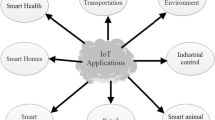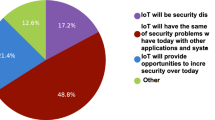Abstract
Wireless sensor nodes typically switch between sleep and wake periods. This poses a rendezvous problem on message senders and recipients. X-MAC, a state of the art sensor network medium access control (MAC) protocol, solves this problem by sending a strobe of short preambles from the message sender until the message recipient wakes up. Upon wake-up, the recipient receives the next strobe, signals the message sender that it is ready to receive, and the message transmission can take place. In sink oriented communication, geographic greedy routing, and link reversal routing, a forwarding node may have more than one potential next hop forwarding node. X-MAC does not support such opportunistic communication patterns. Instead it requires the sender to name the recipient explicitly. However, preamble length can be saved when message transmission starts as soon as the first one of the set of potential next hop nodes is waken up by a preamble. This requires PaderMAC, a new MAC protocol, where the decision on the next hop node is shifted from the sender to the receiver. This work specifies the PaderMAC protocol, explains the implementation of that protocol using TinyOS and the MAC layer architecture (MLA), describes a contribution to the MLA which is useful also for other MAC layer implementations, and presents the results of a testbed and theoretical performance study. The testbed study compares PaderMAC in conjunction with opportunistic routing to X-MAC in conjunction with path-based routing and shows how PaderMAC reduces the preamble length, better balances the load and further improves the end-to-end latency within the network.













Similar content being viewed by others
References
Ahn G, Hong S, Miluzzo E, Campbell A, Cuomo F (2006) Funneling-mac: a localized, sink-oriented mac for boosting fidelity in sensor networks. In: Proceedings of the 4th international conference on Embedded networked sensor systems. ACM, p 306
Biswas S, Morris R (2005) Exor: opportunistic multi-hop routing for wireless networks. In: Proceedings of the annual conference of the special interest group on data communication (SIGCOMM), pp 133–144
Blum BM, He T, Son S, Stankovic JA (2003) IGF: a state-free robust communication protocol for wireless sensor networks. Tech. Rep. CS-2003-11. Department of Computer Science, University of Virginia
Buettner M, Yee G, Anderson E, Han R (2006) X-MAC: a short preamble MAC protocol for duty-cycled wireless sensor networks. In: Proceedings of the 4th international conference on embedded networked sensor systems. ACM, p 320
De Couto DSJ, Aguayo D, Bicket J, Morris R (2003) A high-throughput path metric for multi-hop wireless routing. In: Proceedings of the 9th annual international conference on mobile computing and networking. ACM Press, New York, p 134
El-Hoiydi A, Decotignie JD (2007) WiseMAC: an ultra low power MAC protocol for the downlink of infrastructure wireless sensor networks. In: Proceedings. ISCC 2004. Ninth international symposium on computers and communications (IEEE Cat. No.04TH8769), vol 1, pp 244–251
Finn GG (1987) Routing and addressing problems in large metropolitan-scale internetworks. Tech. Rep. ISI/RR-87-180. Information Sciences Institute (ISI)
Fonseca R, Gnawali O, Jamieson K, Levis P (2009) Collection tree protocol. In: SenSys ’09: proceedings of the 6th ACM conference on embedded network sensor systems. ACM
Frey H (2005) Geographical cluster based routing with guaranteed delivery. In: 2nd IEEE international conference on Mobile Ad-hoc and Sensor Systems (MASS). Washington
Frey H, Görgen D (2006) Geographical cluster based routing in sensing-covered networks. IEEE Trans Parallel Distrib Syst Spec Issue Localized Commun Topol Protoc Ad Hoc Netw 17(4):885–891
Füßler H, Widmer J, Käsemann M, Mauve M, Hartenstein H (2003) Contention-based forwarding for mobile ad-hoc networks. Ad Hoc Netw 1(4):351–369
Heissenbüttel M, Braun T (2003) BLR: beacon-less routing algorithm for mobile ad-hoc networks. Elsevier’s Comput Commun J 27:1076–1086
Hill J, Szewczyk R, Woo A, Hollar S, Culler D, Pister K (2000) System architecture directions for networked sensors. ACM Sigplan Not 35(11):93–104
Klues K, Hackmann G, Chipara O, Lu C (2007) A component-based architecture for power-efficient media access control in wireless sensor networks. In: Proceedings of the 5th international conference on Embedded networked sensor systems - SenSys ’07, vol 1, p 59
Lin EY, Rabaey J, Wolisz A (2004) Power-efficient rendezvous schemes for dense wireless sensor networks. In: Proceedings of the IEEE international conference on communications, vol 7 pp 3769–3776
Lin P, Qiao C, Wang X (2004) Medium access control with a dynamic duty cycle for sensor networks. In: 2004 IEEE wireless communications and networking conference 2004, vol 3. WCNC, pp 1534–1539
Lu G, Krishnamachari B, Raghavendra CS (2004) An adaptive energy-efficient and low-latency MAC for data gathering in wireless sensor networks. In: Proceedings of the 18th international parallel and distributed processing symposium
Nelson R, Kleinrock L (1984) The spatial capacity of a slotted aloha multihop packet radio network with capture. IEEE Trans Commun 32(6):684–694
Park VD, Corson MS (1997) A highly adaptive distributed routing algorithm for mobile wireless networks. In: Proceedings of the 16th IEEE conference on computer communications (INFOCOM’97)
Philip SJ, Ghosh J, Ngo HQ, Qiao C (2006) Routing on overlay graphs in mobile ad hoc networks. In: Proceedings of the IEEE global communications conference, exhibition & industry Forum (GLOBECOM’06)
Polastre J, Hill J, Culler D (2004) Versatile low power media access for wireless sensor networks. In: Proceedings of the 2nd international conference on embedded networked sensor systems. ACM, New York, pp 95–107
Rhee I, Warrier A, Aia M, Min J, Sichitiu ML (2008) Z-MAC: a hybrid MAC for wireless sensor networks. IEEE/ACM Trans Netw 16(3):511–524
Shah R, Wietholter S, Wolisz A, Rabaey J (2005) When does opportunistic routing make sense? In: Third IEEE international conference on pervasive computing and communications workshops (March), vol 1, pp 350–356
Stojmenovic I, Lin X (2001) Power-aware localized routing in wireless networks. IEEE Trans Parallel Distrib Syst 12(11):1122–1133
Sun Y, Gurewitz O, Johnson DB (2008) RI-MAC: a receiver-initiated asynchronous duty cycle MAC protocol for dynamic traffic loads in wireless sensor networks. In: SenSys ’08: proceedings of the 6th ACM conference on embedded network sensor systems. ACM, New York, pp 1–14
Takagi H, Kleinrock L (1984) Optimal transmission ranges for randomly distributed packet radio terminals. IEEE Trans Commun 32(3):246–257
Tejeda H, Chavez E, Sanchez JA, Ruiz PM (2006) A virtual spanner for efficient face routing in multihop wireless networks. In: Cuenca P, Orozco-Barbosa L (eds) Proceedings of the IFIP TC6 11th international conference on personal wireless communications. Lecture notes in computer science, vol 4217. Springer, Albacete, pp 459–47
Van Dam T, Langendoen K (2003) An adaptive energy-efficient MAC protocol for wireless sensor networks. In: Proceedings of the 1st international conference on Embedded networked sensor systems. ACM, p 180
Ye W, Heidemann J, Estrin D (2001) An energy-efficient MAC protocol for wireless sensor networks. Tech. rep., USC/ISI
Zorzi M, Rao RR (2003) Geographic random forwarding (geraf) for ad hoc and sensor networks: energy and latency performance. IEEE Trans Mobile Comput 2(4):349– 365
Zou L, Lu M, Xiong Z (2004) Pager: a distributed algorithm for the dead-end problem of location-based routing in sensor networks. In: Proceeding of the 13th international conference on computer communications and networks (ICCCN’10), pp 509–514
Author information
Authors and Affiliations
Corresponding author
Rights and permissions
About this article
Cite this article
Autenrieth, M., Frey, H. PaderMAC: Energy-efficient machine to machine communication for cyber-physical systems. Peer-to-Peer Netw. Appl. 7, 243–254 (2014). https://doi.org/10.1007/s12083-013-0241-3
Received:
Accepted:
Published:
Issue Date:
DOI: https://doi.org/10.1007/s12083-013-0241-3




